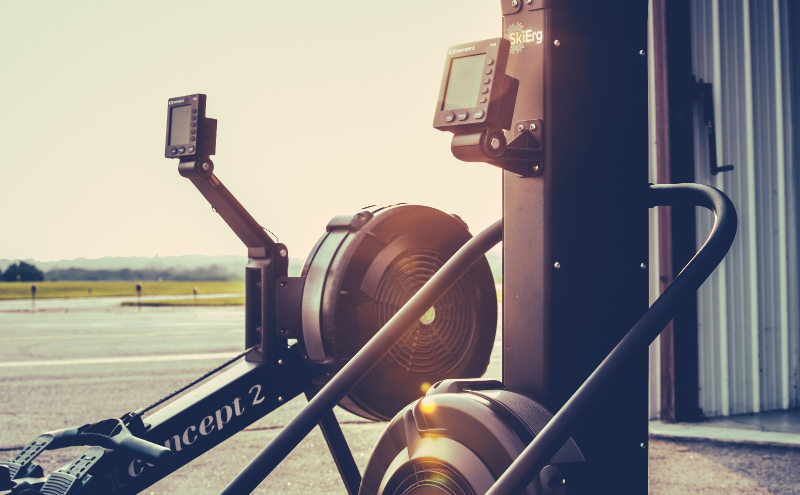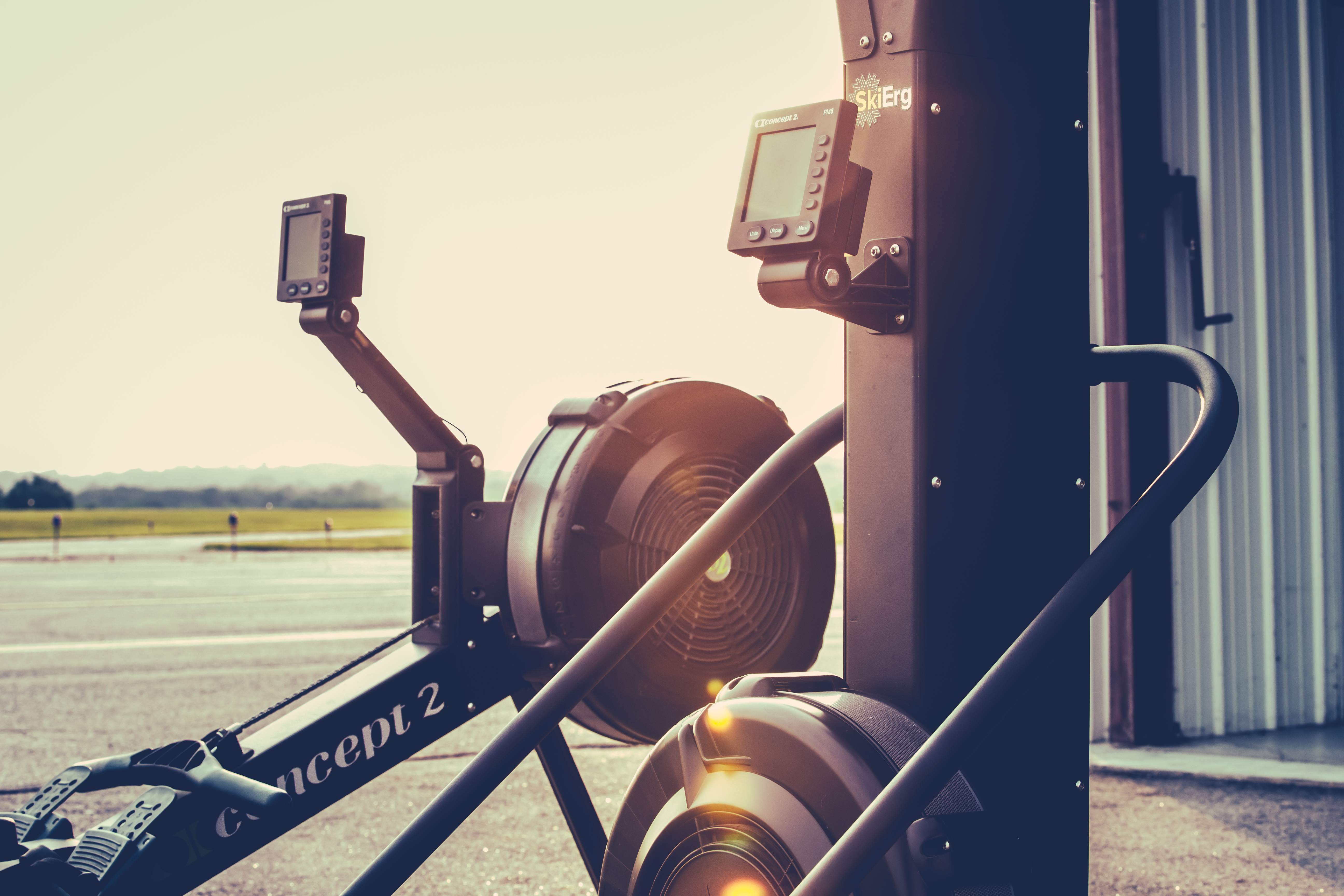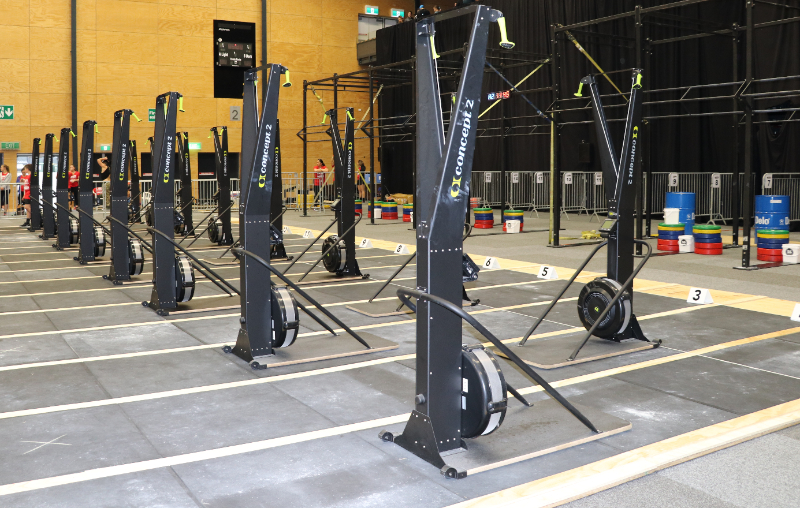- Track your orders
- Save your details for express checkout
Blog
The CrossFit Athlete's Guide to the Concept2 SkiErg
The Concept2 SkiErg is now very much a part of the CrossFit repertoire of events. The machine appeared at the 2016 edition of the CrossFit Games, and went on to feature in the program at the New Zealand Nationals CrossFit Individual and Teams Events. If you haven’t had the chance to master the SkiErg yet or are looking for ways to upskill on this versatile machine; we have put together some tips to help you conquer the SkiErg in competition and use it to get the most out of training.
The SkiErg Basics
First things first- in order to conquer the SkiErg you will need to know what it does, which muscles it works, and what type of workout you can expect. If you haven’t skied, or used the SkiErg before, here’s what you need to know…
The SkiErg is very much a triple threat- it can be used in strength workouts, endurance workouts, and as a combination of both. You can check out the Ski action in this video or refer to the graphic below. Notice how the first part of the stroke (hands above shoulders) works the biceps, triceps, lats, shoulders and core, with roughly the second half of the stroke moving into a squatting position which draws in the quads, glutes and calves. This Ski action on the SkiErg utilizes all major muscle groups, with slightly more emphasis on the upper body than the Concept2 Indoor Rower. The Ski motion is fluid and repetitive, enabling it to be assigned to endurance workouts- the high turnover of strokes will have your aerobic system firing and your blood pumping! Be sure to prepare for the cardio element, as you will need to take this into account as you pace yourself through longer workouts.

On the recovery phase of the SkiErg stroke, technique can be flexible and more about what works for you. The classic ski style that skiers training on the SkiErg will use keeps the arms close to the body on the recovery and is derived from a ski technique that involves carrying long ski poles- something that is not relevant in CrossFit. The important thing about the recovery phase is that your arms and shoulders stay as loose and relaxed as possible, so as not to require any unnecessary effort.
How Long Will My SkiErg WOD Take?
Before we can look at tactics for getting through SkiErg WOD’s, it helps to explain how you can get a gauge on how long your WOD is likely to take you, so you can assess whether to take a strength or endurance approach.
As with other CrossFit machine disciplines, SkiErg WOD’s can be determined in either distance or calories. For those familiar with the Concept2 Indoor Rower, the SkiErg shares the exact same PM5 monitor with the same data fields by which to measure your workout. If you have a WOD over distance, you will be able to take the time per 500m split option, which will give you an indication of how long it might take you to complete a set distance. When it comes to a calorie workout, the SkiErg accrues the same calories over time as the Concept2 Indoor Rower when paced at the same split. This can be a useful reference, if you know that you will take 5 mins to burn 50 calories at 2.33 split per 500m on the Concept2 Indoor Rower, it will take you the same time to Ski that 50 calories on the SkiErg. Depending on your strengths it may or may not be realistic to expect to hit the same splits on the SkiErg has you would on the Indoor Rower, especially if you are new to the SkiErg. Take your Indoor Rower splits as a reference point for workout duration, and not necessarily an indication of what your split should be.

The Concept2 Indoor Rower and SkiErg both feature the PM5 Monitor, calibrated to accrue calories at the same rate.
SkiErg WOD Tactics
Because the Concept2 SkiErg is such a versatile machine, it helps to have strategies to tackle both strength and endurance-based workouts.
Strength: A SkiErg WOD that focuses on strength will be short in duration; possibly a sprint to burn 5-20 calories as quickly as possible. For these types of strength WOD’s it is important to maintain a long stroke, while trying to achieve a high turnover of strokes (stroke rate). This can be a challenge in the heat of competition when you are trying to be as quick as possible, so take care to make sure an increase in stroke rate doesn’t come at the cost of reducing stroke length. You need to make sure you work the whole stroke in order to take advantage of all available muscle groups.
To maximize explosive strength, you will want to increase the drag factor to a resistance that allows you to grip the stroke as early as possible, while still being able to accelerate through to the finish. A good indicator that your drag factor might be too high, is if you find your stroke slowing down through the middle, as your hands travel down from shoulder level to knee level. This is the transition part of the stroke, and if you can’t relay the resistance fluidly from one muscle group to the next, this is a sign your resistance is too high.
Endurance: We have seen WOD’s on the Concept2 Indoor Rower at the CrossFit Games that have demanded athletes to compete a half marathon- up to 1hr and 30mins of rowing. While a SkiErg event of the same nature is yet to come around in the games, it may only be a matter of time- especially when you consider the SkiErg was built to simulate one of the toughest endurance sports out there (Cross-Country skiing). Much like other endurance events, a long SkiErg WOD involves pacing tactics to ensure you last the distance while getting to the end as quickly as possible. Start by choosing a lighter drag factor, a level that requires you to be quick at the top of the stroke to feel the drag, and enables a smooth acceleration through to the end of a full stroke. The ideal endurance stroke should allow you to take the drive phase and the recovery at a fairly similar speed (slightly longer on the drive), and roughly within a rating range of 40-50spm. Everyone is different of course, but you can use this as a guideline to get started on the right track.
The SkiErg line up at the 2017 New Zealand Nationals CrossFit Teams Event
How to Prepare for a SkiErg WOD
The best way you can prepare for a SkiErg-based WOD is to practice on the SkiErg in training. By incorporating the SkiErg into your regular routine- even simply as a warm up or warm down around other WOD’s- you will get to know the machine better, and where your range might be in terms of drag factor, split and rate of calorie consumption. The good news about the SkiErg is that they aren’t just useful to practice on for SkiErg WOD’s. The wide range of muscle groups that are used in a SkiErg workout encourages muscular and endurance development that can benefit a wide range of disciplines that could crop up in competition. Much like the Concept2 Indoor Rower, the no-impact endurance workout that the SkiErg offers, also allows aerobic fitness development, without the added stiffness and soreness that impact sports like running and skipping produce. Plus- how often do you find an endurance workout that works the arms and shoulders equally with the legs?
Finally, the SkiErg is a great builder machine, encouraging functional strength that can be taken and applied to weights disciplines, or used as a rehab option to maintain muscular development when heavier weights are off the menu. There really isn’t much you can’t get out of a Concept2 SkiErg Workout, part of what makes this machine so perfect for CrossFit competition.



 Please wait
Please wait